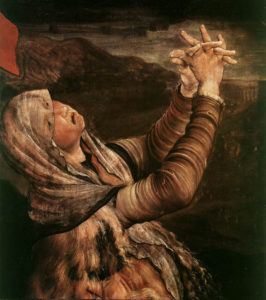by Gaedhal
I apologise for these bombards, however classical literature is great stuff, and, as Miller, Walsh, Gregor, McDonald et al. argue: it is immediately relevant to the study of ancient Semitic religions like Judaism and Christianity.
Cicero was an anti-Epicurean, however even he ditched ‘the underworld’. The Catholic Bible, in its Latin and Greek editions, uses the same words for ‘Hell’, or ‘the Underworld’ as the Greco-Roman pagans: infernus—‘the Underworld’—, ‘Tartarus’ and ‘Hades’.
Pagans, mercifully, decommissioned these centres of ghostly torture. However, the Christians—spiritual terrorists that they were—recommissioned this greatest weaponry of priestcraft. The Catholics even went so far as to invent a temporary Hell that one could pay his/her way out of, by means of the sale of indulgences!
Christianity, and its notions of Hells, Purgatories and Limbos, is the greatest calamity to have befallen Europe. I haven’t fully overcome my irrational fear of these places, even though my rational mind has traced the anthropological origins of such places. Even the smallest chance of there being a lake of fire, which flays one alive for all eternity, is enough to drive one mad… and down through Christendom’s bloody course it had indeed driven droves mad.
______ 卐 ______
The Editor’s two cents:
At the bottom of his statement, Gaedhal adds this image of one of the classic literature books he has been reading. From the American continent, I sympathise greatly with what Gaedhal tells us from Ireland.
I have alluded many times on this site to a philosophical autobiography I wrote in three volumes. If one day my publishing dream were to come true and that trilogy were to be published under a single cover, on paper as thin as that of Bibles and in such an elegant edition printed by a press as only Catholic publishers possess for some fancy missals for example, perhaps I could title that thick volume Hojas (Leaves), referring to the fifth and last chapter of the first volume.
There I mention an internal persecutor caused by my Catholic father’s mistreatment of me in my teens and twenties. That inner persecutor was the fear of eternal damnation.
That’s something that, even with decades of ‘therapy’ in the form of all the reading I have done debunking Christianity, still haunts me, albeit in a much-diminished form compared to the Legion of demons that assailed me in my youth. When I lived in Spain a woman told me that old people still suffered from this fear. And in the historical past there were millions who did!
Above, detail of a Matthias Grünewald painting. The painter ignored Renaissance classicism to continue the style of late medieval Central European art. His Isenheim Altarpiece (1512-1516) thus depicts the spirit of the Dark Ages.
Can you see why I say that the mature National Socialist reads Hitler’s after-dinner talks as a more adult phase than Mein Kampf for the masses of Germans? It was in one of those talks that Uncle Adolf said that Christianity had introduced ‘spiritual terror’ into the Aryan world. In my opinion, it is impossible for the Aryan to heal unless he gets that Vampire off his back.
If my trilogy becomes available in English it will be much easier to understand the POV of The West’s Darkest Hour.
